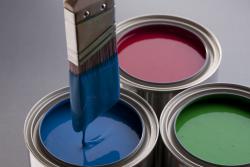
Society
Main Category
Era
Date Created
City
Philadelphia
State
Country
Developed by Rohm and Haas in the 1940s, water-based acrylic emulsion technology filled a need for easy-to-use household paints for a growing suburban population in the United States following World War II. This aqueous technology required less preparation to use, was easier to clean up, had less odor, and performed better than or equal to paints made with solvents. It was also a leap forward in acrylic chemistry.
Rohm and Haas scientists began to explore water-based acrylic technology in the 1940s—initially for the leather and textiles markets. In 1953, Rohm and Haas developed Rhoplex AC-33, an acrylic binder used to make house paints. This water-based technology required less preparation to use, was easier to clean up, had less odor, released less polluting fumes—and performed better than or equal to paints formulated with solvents.
Image Credit
Courtesy Flickr/United Soybean Board (CC BY 2.0)
Image Caption
From plastics to paints it changed our world


